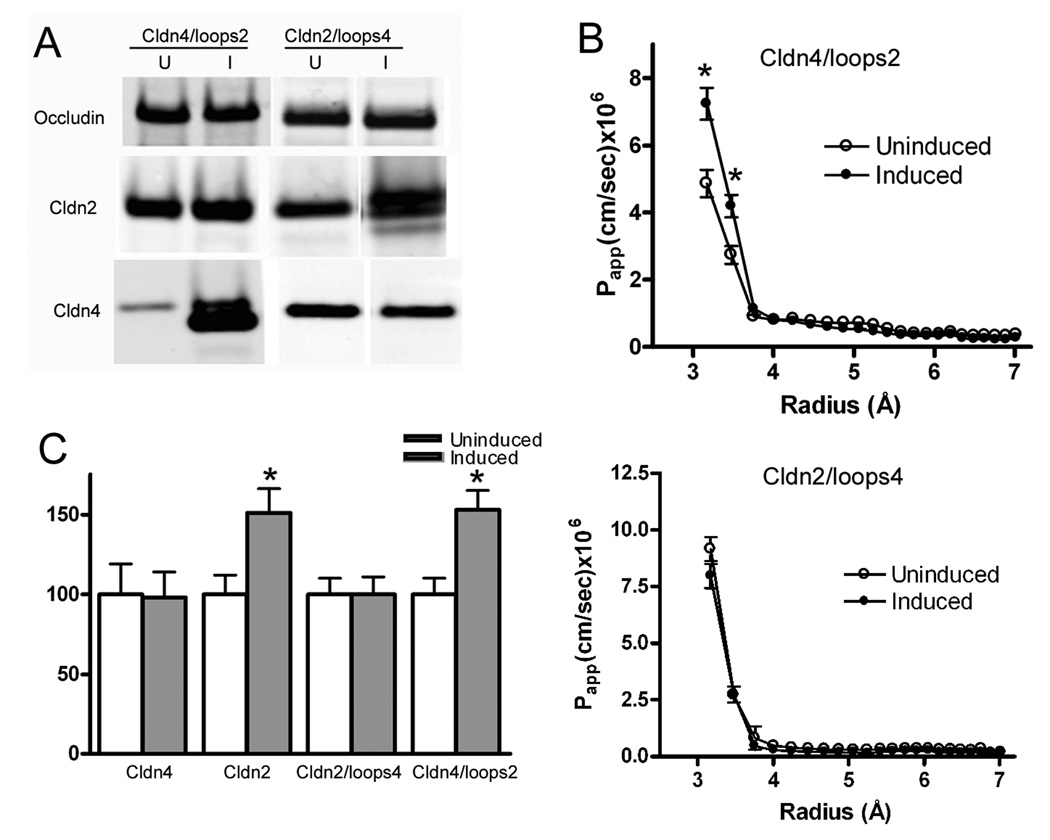Fig. 2.
The extracellular domains of claudin-2 are responsible for the increase in permeability of small PEGs seen after expression of wild-type claudin-2. A. Chimeric claudins are inducible in MDCK II cells. Left: immunoblots of cells uninduced (U) or induced (I) to express cldn4/loops2 demonstrate induction of the chimera (as detected by the claudin-4 antibody; see legend for Fig 1) and relatively little effect on either occludin or endogenous claudin-2. Right: similarly, induction of cldn2/loops4 chimera (as detected with the claudin-2 antibody) has little effect on occludin expression, but does result in a small decrease in endogenous claudin-4 expression, as has been previously demonstrated. B. PEG profiling demonstrates that (top) expression of cldn4/loops2 results in increased Papp for PEGs smaller than 4Å, with little effect on larger PEGs; induction of cldn2/loops4 (bottom panel) has no effect on PEG permeability. C. When Papp for PEG 3.5Å is compared in cell lines induced to express claudin-2, -4 or chimeric claudins, only expression of claudins containing the extracellular domains of claudin-2 result in significant increases in PEG permeability. (N=3 or greater for each construct; *P<0.05).

